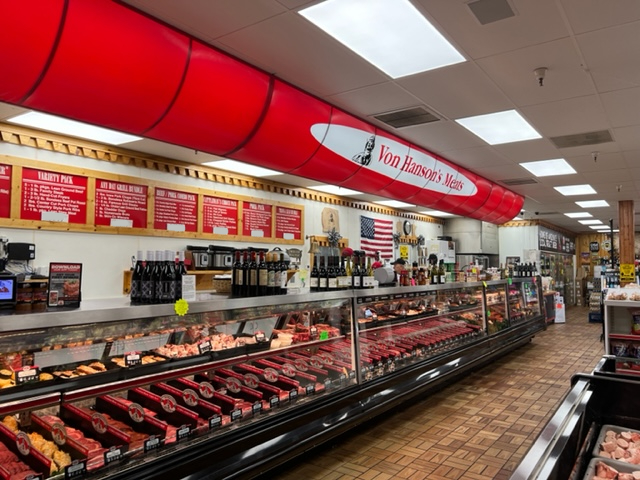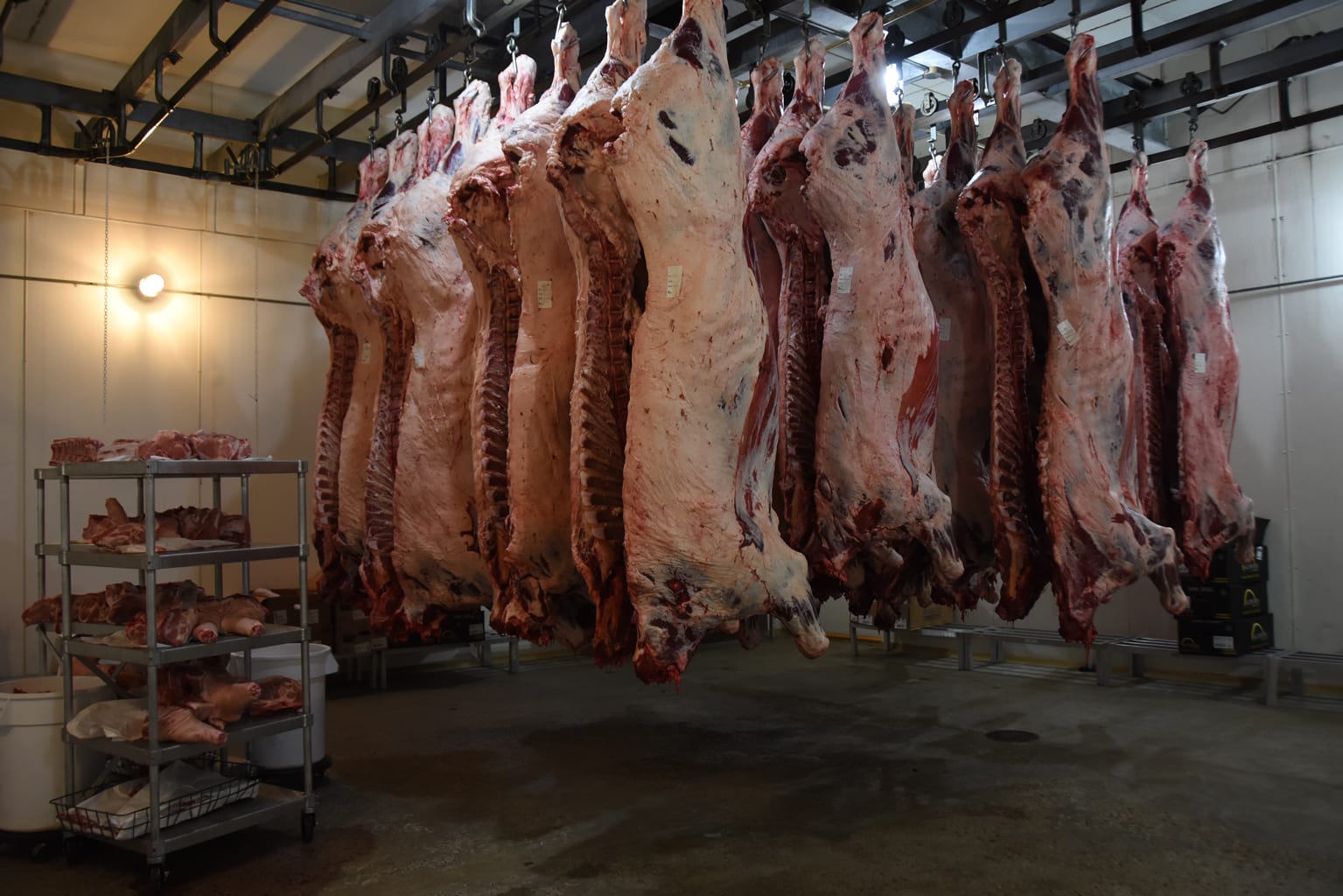Bagley Farms Meat Market Edwardsville IL: Your Relied On Resource for High-Quality Meats
Bagley Farms Meat Market Edwardsville IL: Your Relied On Resource for High-Quality Meats
Blog Article
Reveal the Art of the Butcher's Cut in a Modern Meat Market
In the ever-evolving landscape of modern meat markets, the butcher's cut has actually transcended its conventional origins, merging old-time workmanship with modern practices. What absolutely sets the modern-day butcher apart is their capability to build a deeper link between customers and the origins of their meat.
Advancement of Butchery Techniques
The advancement of butchery techniques mirrors a rich tapestry of innovation and adjustment driven by improvements in technology, modifications in customer demand, and a much deeper understanding of meat science. Historically, butchery was a craft gave via generations, with approaches sharpened over centuries to optimize yield and flavor. The industrial transformation ushered in mechanization, changing traditional techniques and enabling large-scale handling.
The mid-20th century saw butchery techniques further refined by clinical understandings into muscle biology and meat aging, enhancing both tenderness and preference. Innovations like vacuum cleaner packaging and refrigeration extended product shelf-life, enabling butchers to diversify offerings and boost top quality control. This duration likewise noted the increase of specialized equipment, such as band saws and meat slicers, which raised precision and performance in meat processing.

Electronic systems now aid in tracking animal provenance and enhancing cuts to meet particular customer preferences. In addition, a revival in artisanal butchery has arised, blending typical abilities with contemporary expertise to cater to consumers seeking ethical and lasting meat alternatives.
Understanding Meat Cuts
Understanding the intricacies of meat cuts is vital for both butchers and consumers looking for top quality and value. Each cut comes from a various component of the animal, presenting special flavors, structures, and food preparation approaches - bagley farms meat market edwardsville il. Mastery of these distinctions not just boosts culinary experiences but additionally makes the most of the utility of each carcass. For butchers, precise cuts mirror ability and respect for the craft, guaranteeing minimal waste and ideal return.

Comprehending muscular tissue composition is vital; muscles used much more regularly by the animal have a tendency to be harder and are best fit for sluggish cooking approaches, while less-used muscular tissues, like those located in the loin, are much more tender and suitable for barbecuing or roasting. Experience with these distinctions empowers consumers to make informed choices, boosting their culinary undertakings.
Picking Top Quality Meat
Choosing the appropriate meat includes even more than simply picking a visually attractive piece from the screen. The art Bonuses of selecting top quality meat needs a critical eye and knowledge of particular qualities that symbolize quality and quality.
Second of all, think about the marbling, which refers to the white streaks of fat within the muscle. Proper marbling is a key indication of inflammation and taste, as it melts throughout cooking, improving the meat's juiciness. Remember, higher marbling usually correlates with superior high quality cuts, such as USDA Prime.
Appearance is another essential aspect; meat should feel firm to the touch, not slimy or overly soft. Furthermore, bear in mind the aroma. Fresh meat should have a tidy, neutral odor, without any sour or off-putting smells.
Matching Cuts With Cooking Techniques

Conversely, tougher cuts like brisket and chuck roast are abundant in collagen, which breaks down into gelatin when prepared slowly. These cuts are excellent for braising or slow-moving roasting, allowing the meat to soften over time and create deep, intricate tastes. Cuts such as brief ribs and pork shoulder fare well with slow-cooking techniques, where prolonged cooking times change their durable appearances into succulent meals.
Lamb shanks and oxtail, which need long term cooking to tenderize, are excellent candidates for cooking or sluggish simmering. These techniques coax out abundant, hearty tastes while preserving wetness. By comprehending the distinct qualities of each try this cut, cooks and home chefs alike can elevate their culinary productions, ensuring each recipe is both satisfying and memorable.
The Butcher's Duty Today
Browsing the evolving landscape of the modern-day meat market, the butcher's function today prolongs past simple preparation of cuts. Contemporary butchers are culinary artisans, instructors, and advocates for lasting techniques. They bridge the space in between the farm and the fork by guaranteeing moral sourcing, understanding pet husbandry, and focusing on transparency in the supply chain. This change mirrors the expanding consumer need for quality over amount, where provenance and animal welfare are vital.
In enhancement to crafting specific cuts, butchers now engage straight with consumers, supplying cooking advice and customizing choices to suit private requirements and choices. Their know-how in meat aging, marbling, and taste profiles equips customers to make enlightened choices, improving their culinary experiences. This individualized service exhibits the butcher's progressing role as a relied on advisor in the kitchen area.
In addition, butchers are crucial in reducing waste, making use of whole animals to develop varied items such as sausages and supplies. This comprehensive approach not just respects the pet however likewise straightens with modern sustainability objectives. This way, the modern butcher embodies both custom and technology, adapting to an ever-changing market while preserving the virtuosity and integrity of their craft.
Verdict
The modern butcher's craft intricately weaves traditional methods with modern-day developments, highlighting sustainable methods and honest sourcing. Mastery in understanding varied meat cuts and quality indicators encourages butchers to why not try these out provide informed suggestions, lining up details cuts with optimum food preparation techniques. This know-how not only raises culinary experiences yet additionally enhances the link between customers and the origins of their food. By honoring historic methods while welcoming modern demands, the butcher's duty remains vital in today's sophisticated meat market (bagley farms meat market edwardsville il).
Report this page